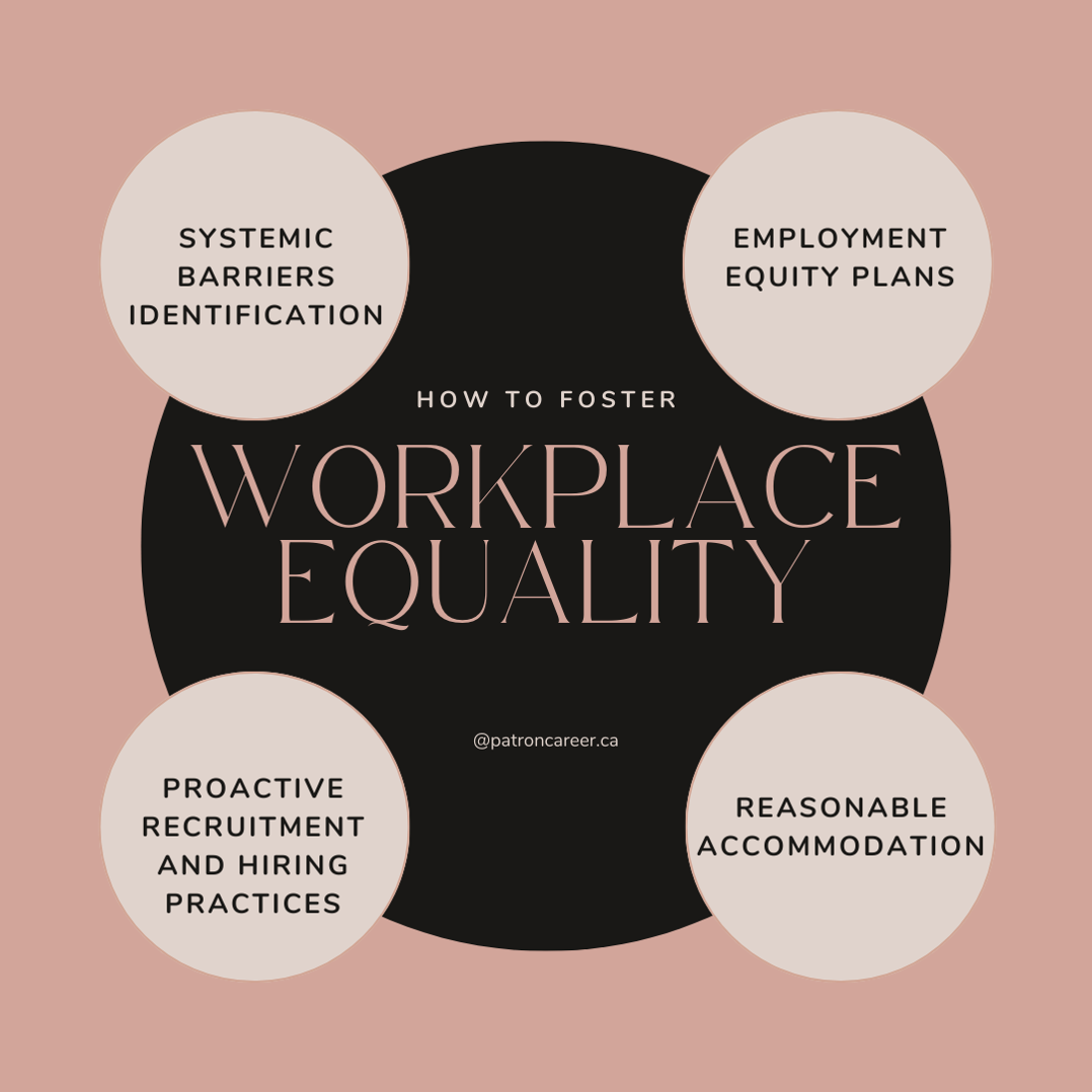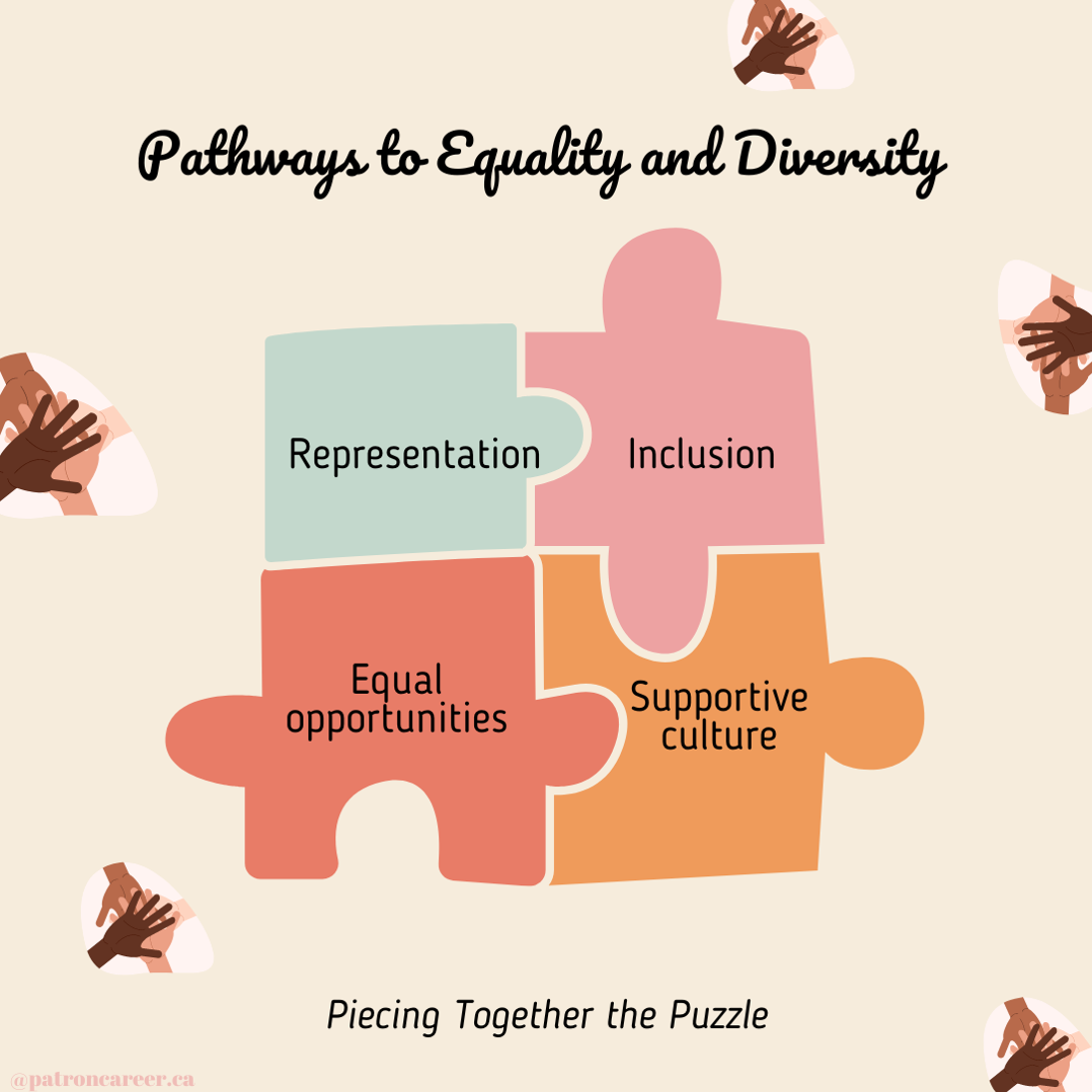
Employee Rights
12 July, 2023
Patron Career Staffing firmly believes in adopting a tailored approach to meet temporary and permanent recruitment needs. We safeguard the interest of our clients by finding such workers who are knowledgeable and reliable.
About UsNeed help? Make a Call
32 Dundas Street East Unit A, L5A1W2

Welcome to the PCS Newsletter section, where we intend to demystify crucial topics that shape Canada's employment realm. In today’s article, we explore a significant piece of legislation that affects around 10% of the Canadian workforce and their sentimentality on achieving workplace equality as a whole: The Employment Equity Act of Canada.
Let’s move on with our purposeful initiative to empower both employers and employees for fostering a diverse and inclusive work environment as we delve into the provisions of this act, its compliance, and much more.
The Basics: Applicability of The Act
The intent of the legislative behind the formation of the Act is clearly defined in section 2 of the EEA.
“The purpose of this Act is to achieve equality in the workplace so that no person shall be denied employment opportunities or benefits for reasons unrelated to ability and, in the fulfilment of that goal, to correct the conditions of disadvantage in employment experienced by women, Aboriginal peoples, persons with disabilities and members of visible minorities by giving effect to the principle that employment equity means more than treating persons in the same way but also requires special measures and the accommodation of differences.”
The objective is unriddled, i.e., to safeguard the interests of four designated groups that have historically fallen prey to discrimination in the Canadian workforce:
The above-designated groups are now given full representation under the act’s provisions so that feelings of alienation and lack of employment opportunities are evaded, once and for all.
The Act regulates workplaces and Canadian companies which are:
1. Federally regulated, these include both private sector and public sector companies such as:
2. Federal employers that employ 100 people or more employees.

Salient Features of the EEA
1. Designated Groups: the EEA identifies several designated groups that have suffered disadvantages in the employment arena of Canada- women, aboriginal people, people with disabilities, and members of visible minorities.
2. Discrimination Prohibited: the major goal of this act is to provide a level playing field to all employees irrespective of their nationality, race, skin colour, ethnicity, age, sex, marital status, family status, gender identity and disability. Thus, the act interdicts discrimination of any kind based on the above factors.
3. Employment Equity Plans: the act not only deepens down criteria for disallowing discrimination in workplaces but also requires employers to create and implement employment equity plans. The plan should focus on implementing policies and measures to accommodate designated groups in Canadian employment and also to rectify the situation of disadvantages for them.
4. Workforce Analysis: section 9 of the EEA requires employers to conduct a workforce analysis and reviews to acknowledge and check the level of underrepresentation of the designated groups. This review shall serve as a footprint in developing effective strategies to combat these barriers.
5. Recruitment and Hiring Procedure: employers must ensure that they have an unbiased recruitment and selection process by eliminating discriminative barriers. Their recruitment policy should be such that it attracts and employs individuals from different designated groups.
Related: What goes into creating a Stellar Recruitment Plan for your business
6. Accommodation for Disabled Persons: employers are required to provide reasonable accommodations to persons with disability to enable their full participation in the workplace.
What Are the Few Key Provisions of the Employment Equity Act?
THE CALL FOR EQUALITY
In the globalization era of today, diversity and inclusivity are not just an invigorated matter of the 21 st century, it is truly valued by the hoi polloi. In a country like Canada, where a good chunk of minorities, women and Aboriginals were denied access to employment. The Employment Equity Act stands as a pedestal of hope for marginalized groups. The Act continues to empower the designated groups since its year of creation, by leveraging the employment field through fairness, diversity and inclusivity initiatives.

MAINSPRING DIVERSITY
The EEA identifies that diversity is not just an ethical imperative but also a catalyst for innovation and productivity. Diversity holds the power to make the single greatest shift by accelerating the growth of underrepresented groups and ultimately gearing up a company for its success. By offering impartial career advancement opportunities to distinct persons, employers can unlock benefits of better goodwill, reduced turnover and gain access to new experiences and perspectives.
Also Read: Unlocking and Building a Diverse Workplace
Moving Forward
The Employment Equity Act renders a fruitful landscape for both employers and designated employee groups. The Act has addressed severe challenges of discrimination and underrepresentation in the workplaces of Canada. It has acted out to go all in and humanise the Canadian workplace by celebrating differences and making the working world a better place to thrive in.
